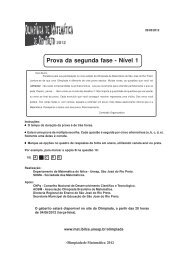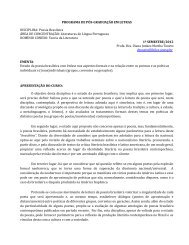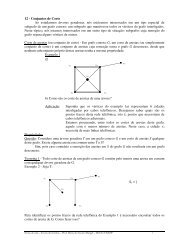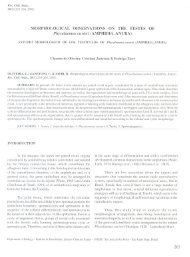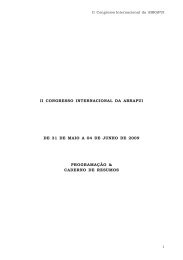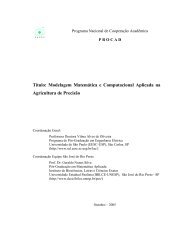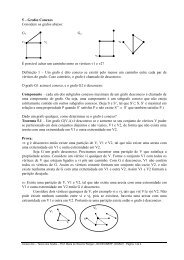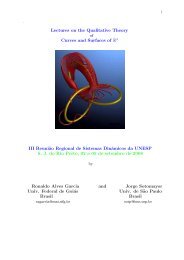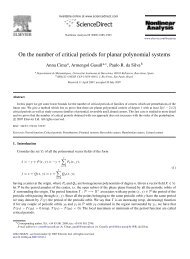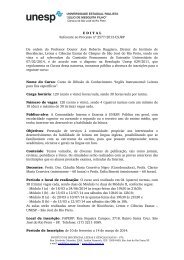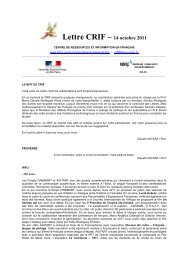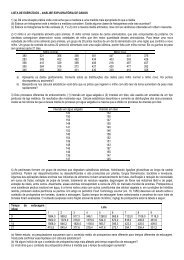Equações Diferenciais Ordinárias (notas de aula) - Unesp
Equações Diferenciais Ordinárias (notas de aula) - Unesp
Equações Diferenciais Ordinárias (notas de aula) - Unesp
Create successful ePaper yourself
Turn your PDF publications into a flip-book with our unique Google optimized e-Paper software.
3.3 Equações em variáveis separadas3.3.2 Equações homogêneasDefinição 3.3.1 (Função homogênea) Uma função f : R 2 → R chama-sehomogênea <strong>de</strong> grau n respeito às variáveis t e x, se para todo λ ∈ R verifica-sea i<strong>de</strong>ntida<strong>de</strong>para algum n ∈ R.f(λt, λx) = λ n f(t, x),Exemplo 1. A função f(t, x) = 3√ t 3 + x 3 é homogênea <strong>de</strong> primeiro grau, poisf(λt, λx) = 3√ (λt) 3 + (λx) 3 = λ 3√ t 3 + x 3 = λf(t, x).Exemplo 2. f(t, x) = tx − x 2 é uma função homogênea <strong>de</strong> segundo grau, pois(λt)(λx) − (λx) 2 = λ 2 (tx − x 2 ).Exemplo 3. f(t, x) = t2 − x 2é uma função homogênea <strong>de</strong> grau zero, poistx(λt) 2 − (λx) 2= t2 − x 2(λt)(λx) tx, isto é f(λt, λx) = λ0 f(t, x).Exemplo 4. f(t, x) = 3√ t 2 + x 2 é uma função homogênea <strong>de</strong> gra 2/3, poisf(λt, λx) = 3√ (λt) 2 + (λx) 2 = λ 2/3 f(t, x).Definição 3.3.2 (Equação diferencial homogênea) A EDO <strong>de</strong> primeiraor<strong>de</strong>m não lineardx= f(t, x) (3.14)dtchama-se homogênea respeito a t e x, se a função f é homogênea <strong>de</strong> grau zerorespeito a t e x.German Lozada CruzMatemática-IBILCEIBILCE-SJRPSolução <strong>de</strong> uma equação homogênea. Pela hipótese f(λt, λx) = f(t, x).Tomando λ = 1 t , temos f(t, x) = f( 1 t t, 1 t x) = f(1, x t ),isto é, a função homogênea <strong>de</strong> grau zero só <strong>de</strong>pen<strong>de</strong> do quociente dosargumentos.63



